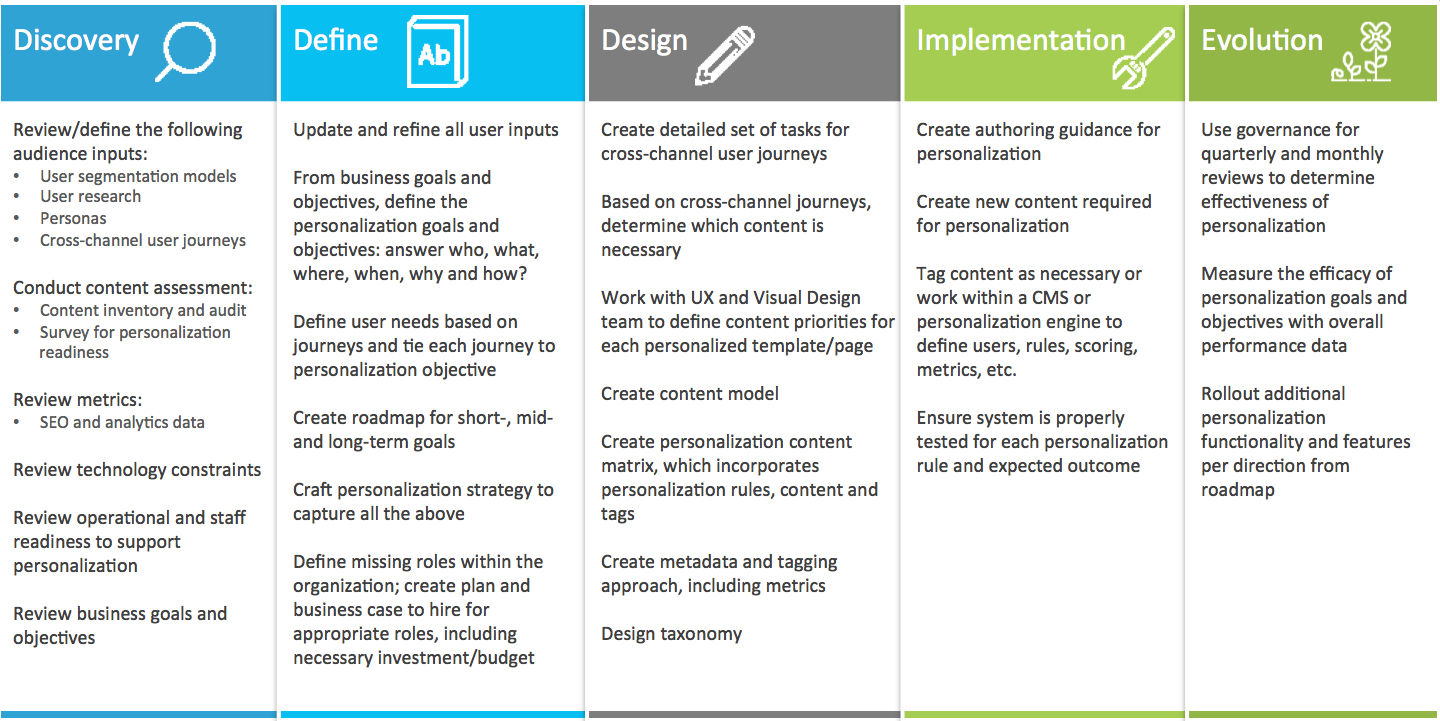- May 11, 2017
- --
Jump over these obstacles to website personalization
Experience Magnolia in action
Experience Magnolia's key features firsthand in an interactive product tour.
Take a tour nowWhat do you think are the primary obstacles that prevent companies from personalizing their websites?
Unproven ROI?
Don’t know who to target?
Tools are difficult to use?
Nope. Those were my guesses but they all proved wrong.
“We haven’t managed to get started”
In 2016 we interviewed 50 Magnolia clients and partners to find out what was important to them. One topic raised consistently throughout the conversations was the need to personalize web content. Strong validation on that point. Almost everyone said they wanted to do personalization but had not managed to get started yet.
We were curious as to why. What was holding them back?
These companies are no strangers to running a successful business on the web — quite the opposite. They are web-savvy firms that see value in personalization. Broadly speaking everyone agrees that even basic web personalization can give a higher return on investment (ROI) than other, more traditional, marketing programs (McKinsey 2013 summarizes it nicely).
Not knowing who to target was not a key obstacle either. Everyone used Google Analytics to analyze visitor patterns. Google conveniently groups the visitors into segments like New users and Returning users and provides plenty of ideas how to segment your visitors further. Once you have GA, it’s not a leap of imagination to run an A/B test in Google Optimize — change a little something and see if it performs better.
The same visitor segments can be used for targeting:
"You can also use segments as the basis for audiences. For example, you might create a segment of users who visit your menswear pages, and then target just those users (your audience) with a remarketing campaign." — Google Analytics help: About segments
In addition to Google Analytics data, companies typically have their own marketing automation and CRM systems that hold even more valuable information about customers such as who had bought what and when.
Getting started was blocked by something else.
1. Fear of having to create new content
There’s a persistent misunderstanding that in order to serve personalized content you need to create new content. Even seasoned pros in the content management industry sometimes fall victim to this fallacy.
It is patently false. You don’t need new content. You can substitute existing content items.
Let’s take a concrete example:
You stay at a hotel and have a gin & tonic from the minibar. The hotel staff records your drink preference. The next time you book they put gin and tonic in the minibar before your arrival.
The hotel doesn’t invent a new drink. They don’t distill a new batch of gin from scratch. They have literally hundreds of cans of gin and tonic sitting in a storage room next to hundreds of other drinks.
Rather than stocking the minibar with a random sampling of drinks they put gin and tonic front and center. They substitute one thing for another to make the experience more relevant to you.
Now transport that idea to web content management. You likely already have some content that is more relevant to the visitor than other content. Put the relevant content first.
It’s a good idea to organize your core content into small, reusable chunks and keep them away from the editorial (supporting) web content of your site. The pool of reusable content items is now at your disposal. You can assemble sets of items and target them to the visitor according to his or her preference.
Flagship brands on the web do exactly the same:
Airbnb hosts don’t write unique home descriptions for each visitor segment. The descriptions are the same for everyone. Instead, based on your location and prior rentals Airbnb assembles a set of homes that fit your taste.
Amazon doesn’t rewrite product descriptions for each segment either. From a pool of millions of products they assemble a set of existing items that we might like.
Alior Bank has a pool of financial products. The pool is much smaller than Airbnb and Amazon’s, yet some of the products match the needs and circumstances of the visitor better than others. Student? Starting a family? Retiring? From a pool of content items the bank assembles product suggestions for your particular life situation.
2. Analysis paralysis
The other great stumbling block is overanalyzing the situation.
It usually goes like this: consult everyone in the organization, analyze the target audience, create 21 different personas to represent archetypal visitors, state ambitious goals such as “personalize anything anytime”, and then freeze because the plan is so big and complex that you don’t know how to proceed.

It’s better to start small. Create the first little experiment. Change the color of a button in a call to action. See if visitors sign up for your newsletter more often when the button is green.
It may be an insignificant change but that’s the key: the effort was also insignificant. The experiment is running. Exciting!
Then change something bigger. You have client references or customer logos, right? Instead of listing all the customers, how about showing only five customers while making sure they are from the same country as the visitor? You are not creating any new content, just choosing a subset of existing content that is relevant for the visitor.
A professional content strategist might object to such spontaneous tomfoolery. They might argue that creating targeted content variations for personalization can be quite substantial effort — and overwhelming for some — adding that a carefully defined content strategy can provide the process and guidelines necessary to get there.
Yes, sure. It’s possible that your experiment does not yield meaningful results. But you only invested an hour and already have an idea on what to change next.
To summarize:
You don’t need to create more content. Just be smarter with how you use existing content.
Don’t get stuck in analysis paralysis. Start with simple personalization experiments.
Surprise your visitors and yourself with what you can do with little things.











